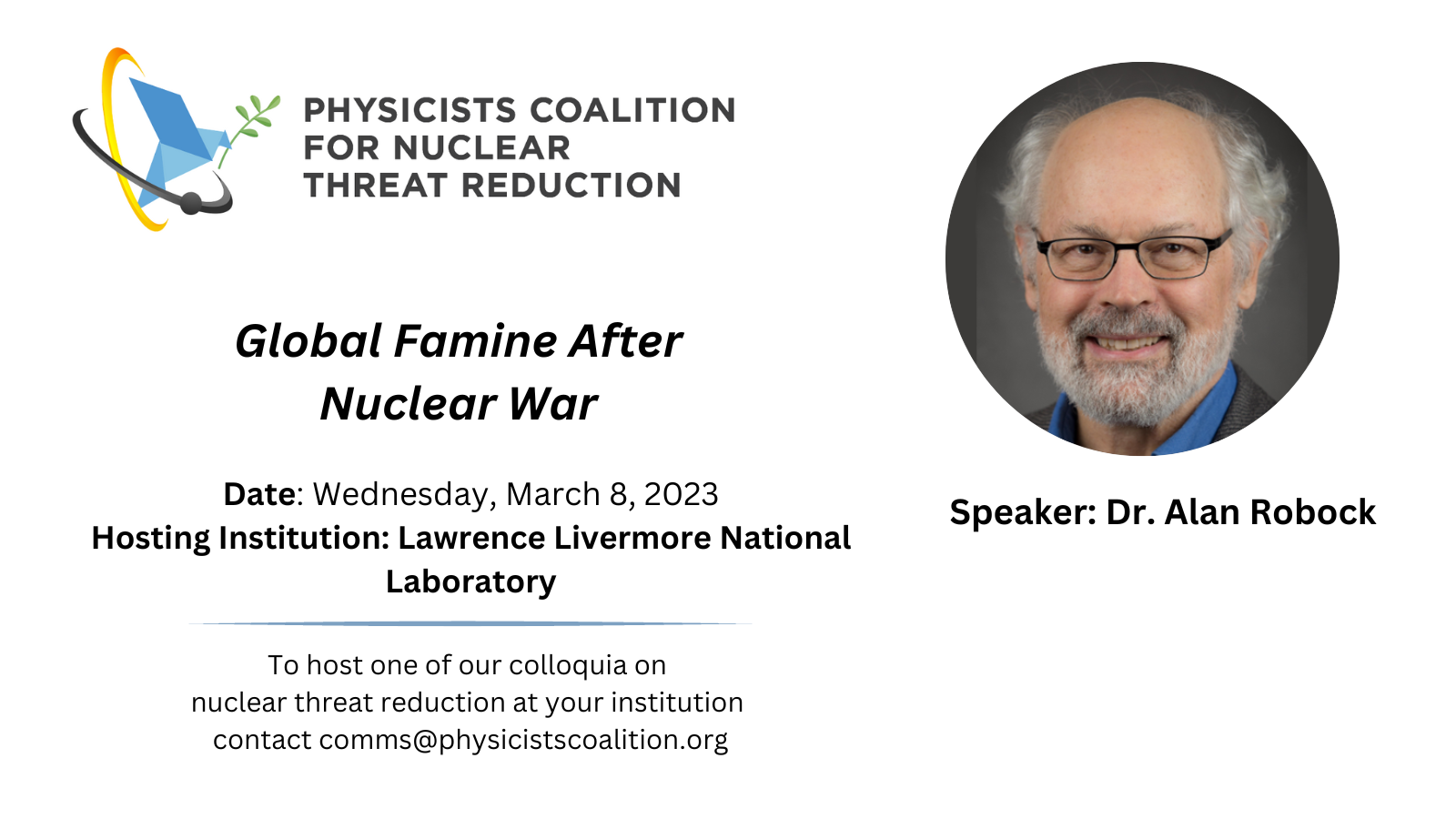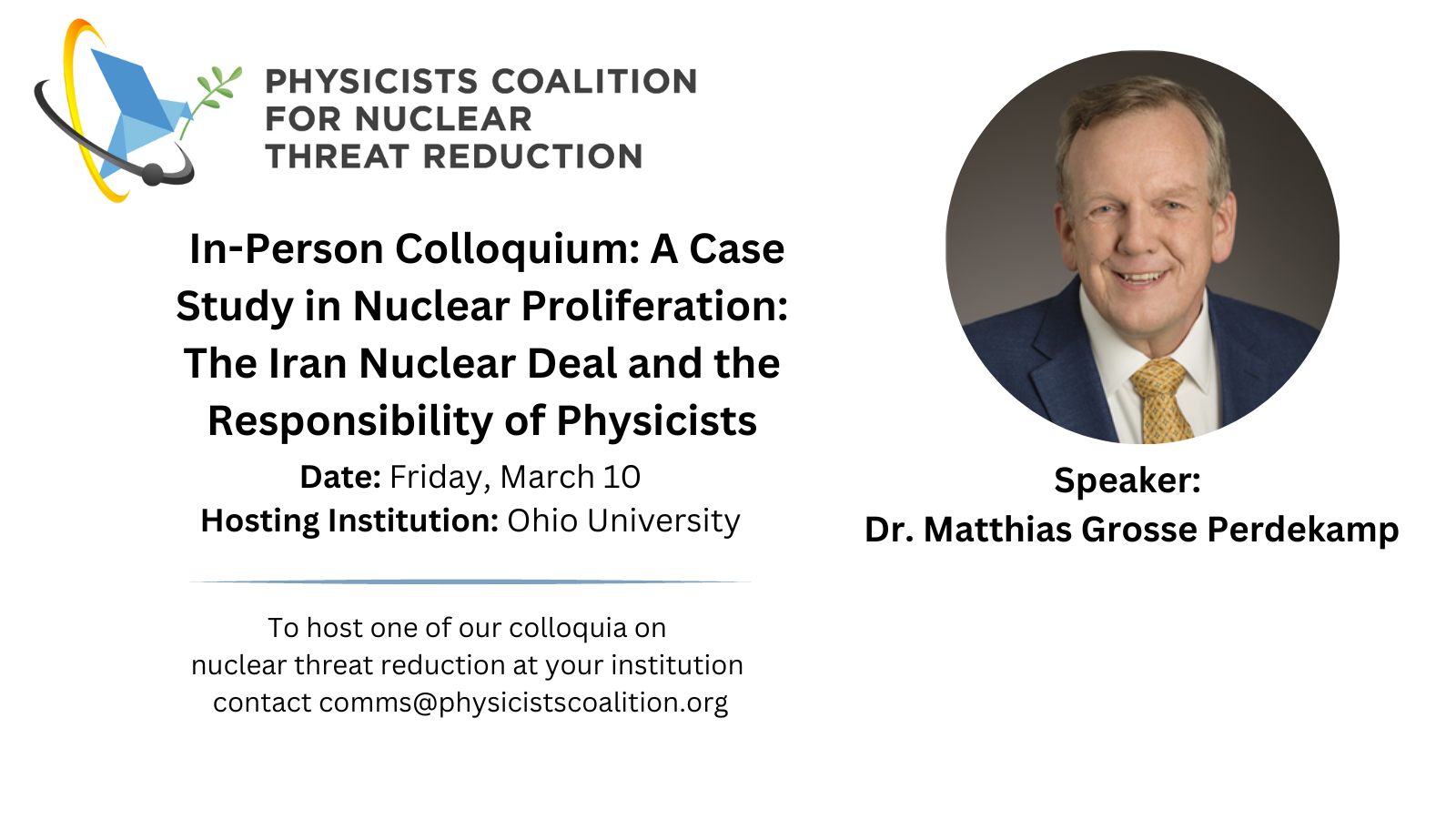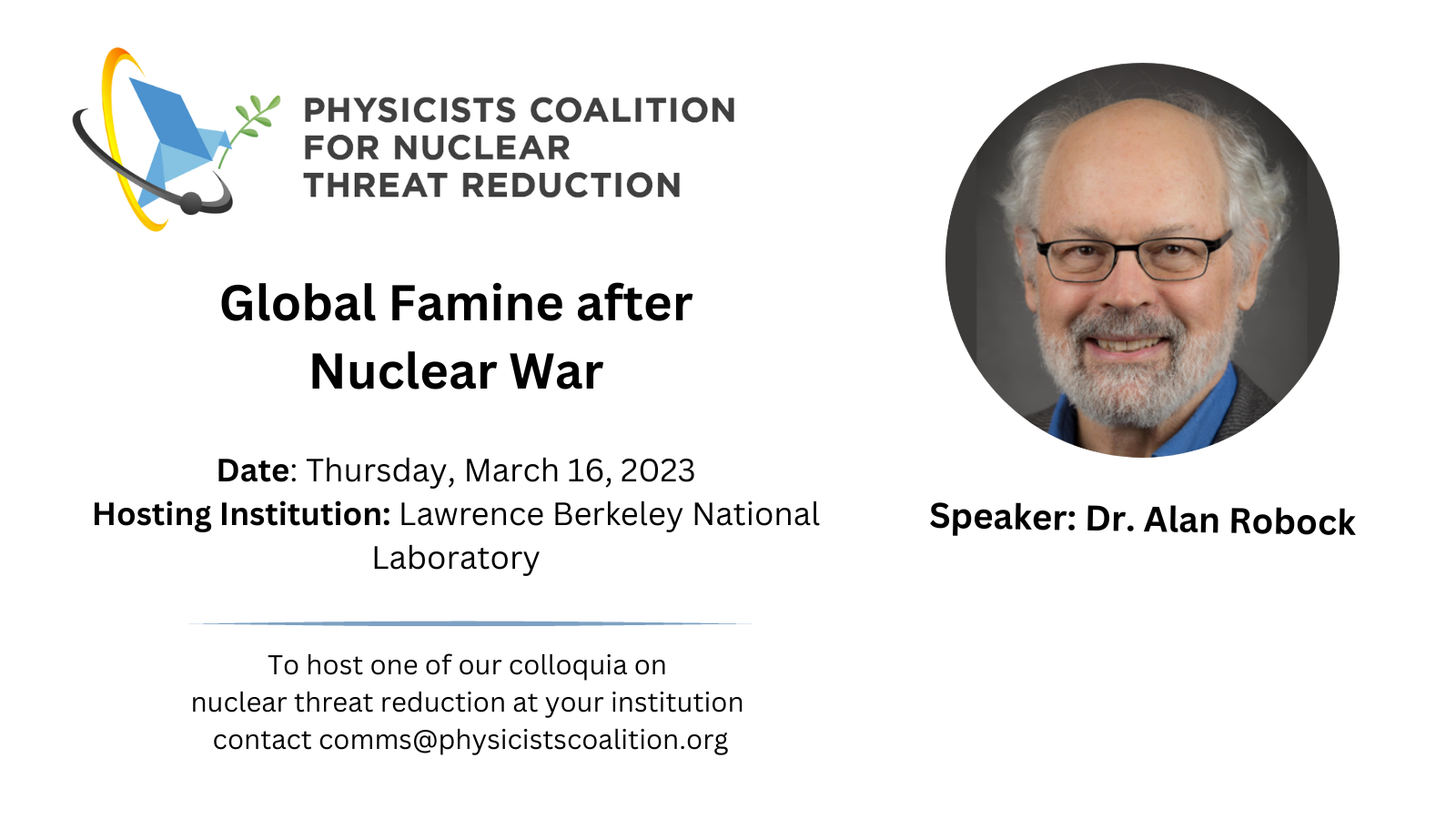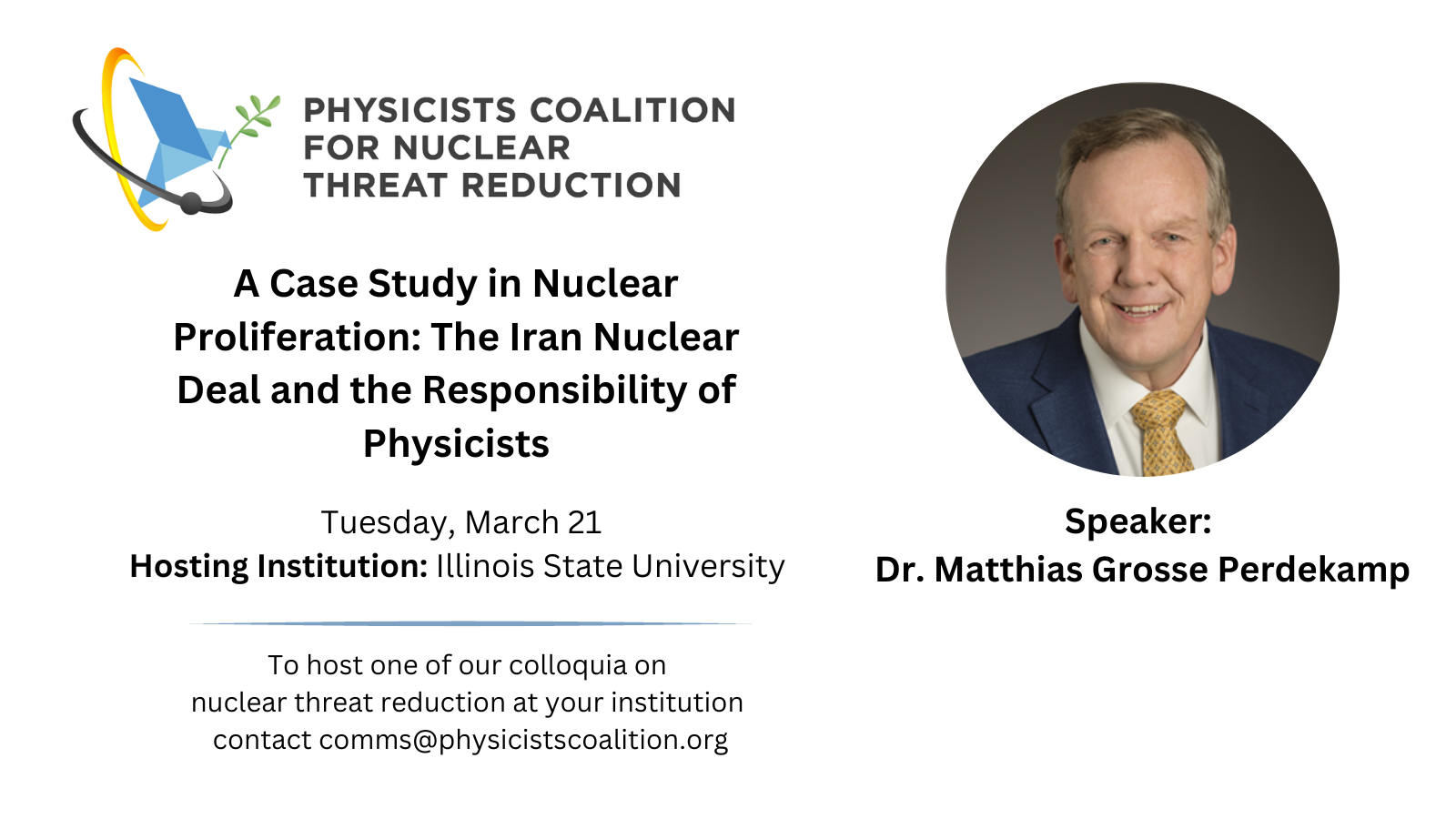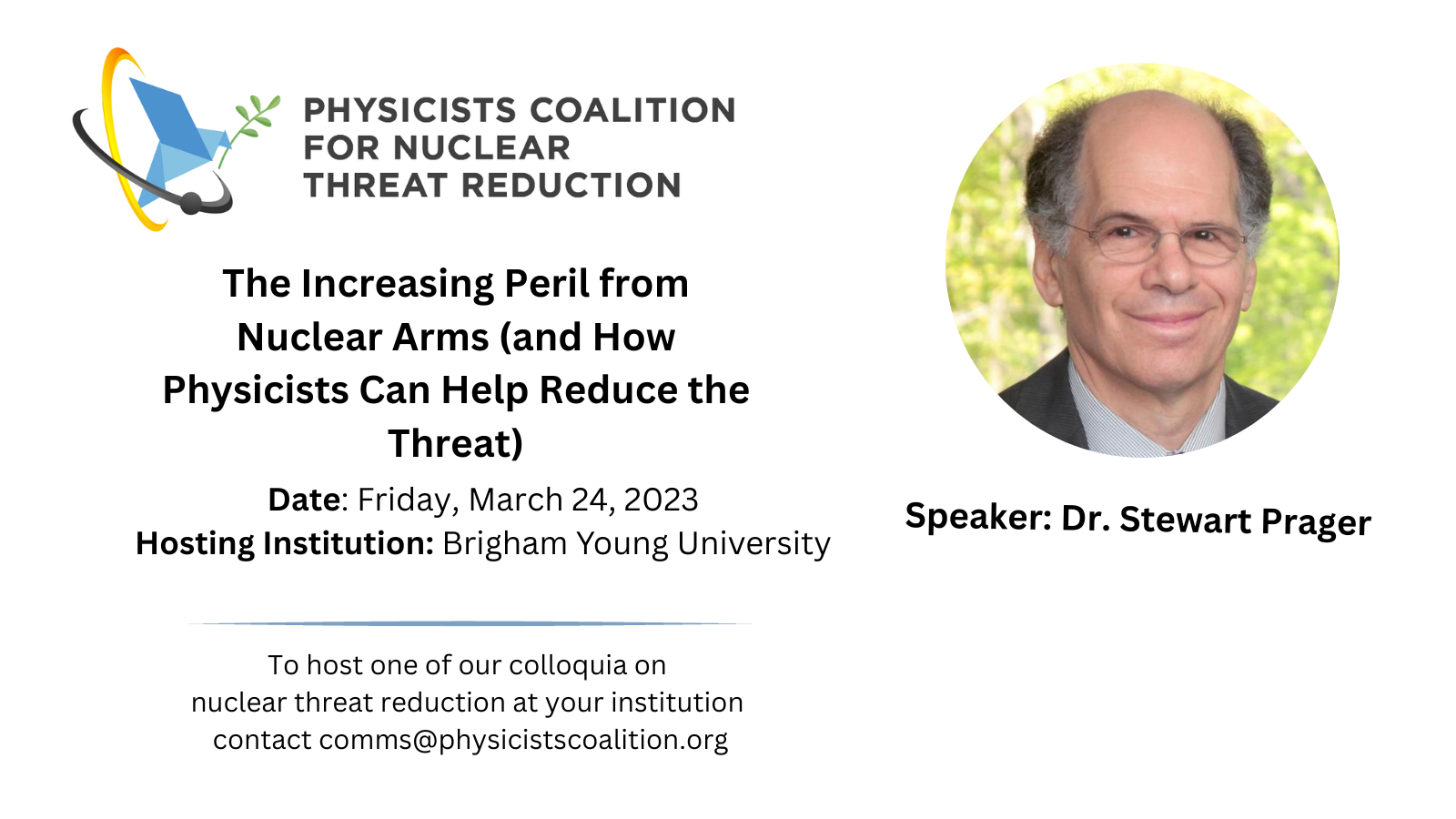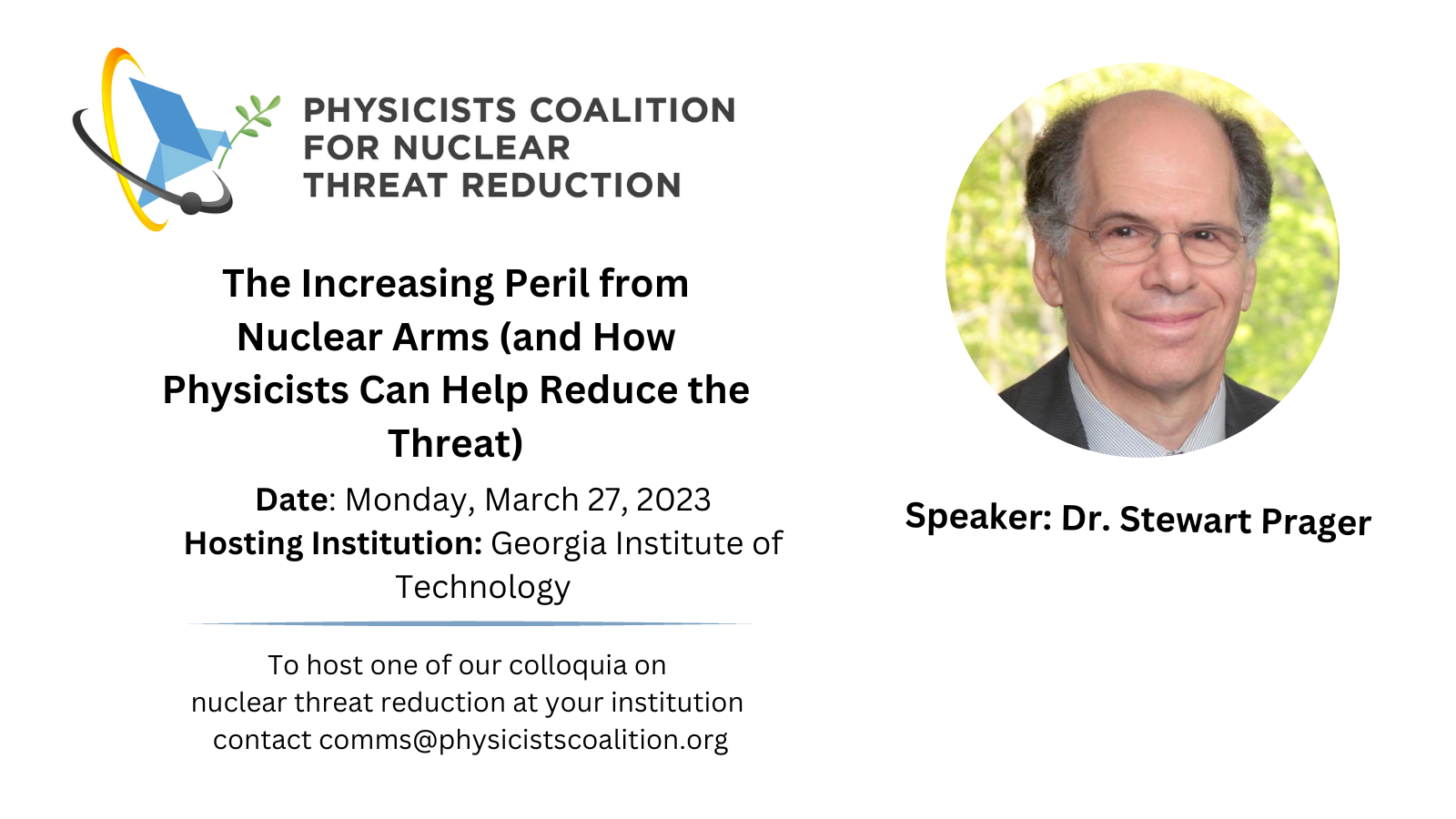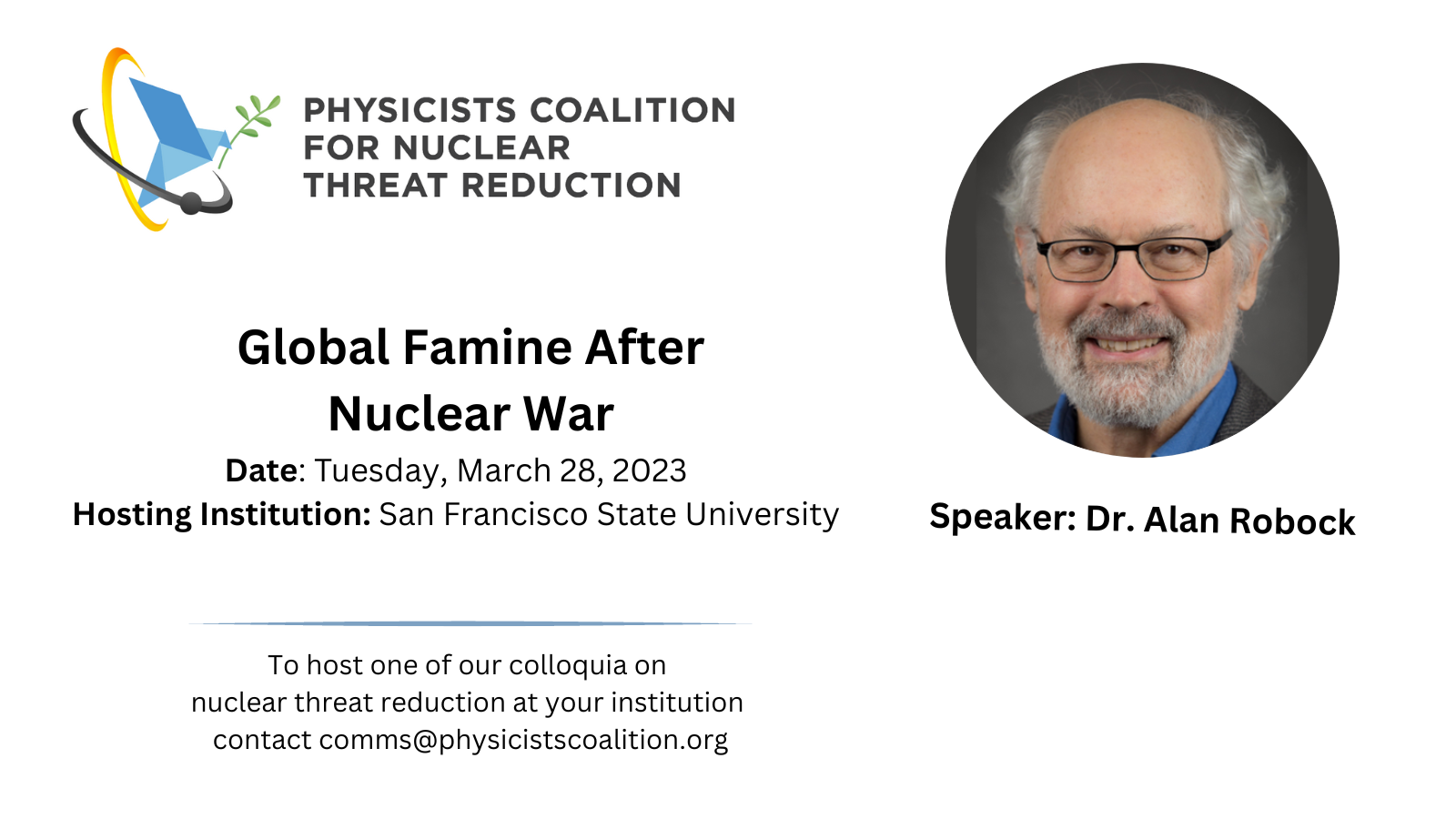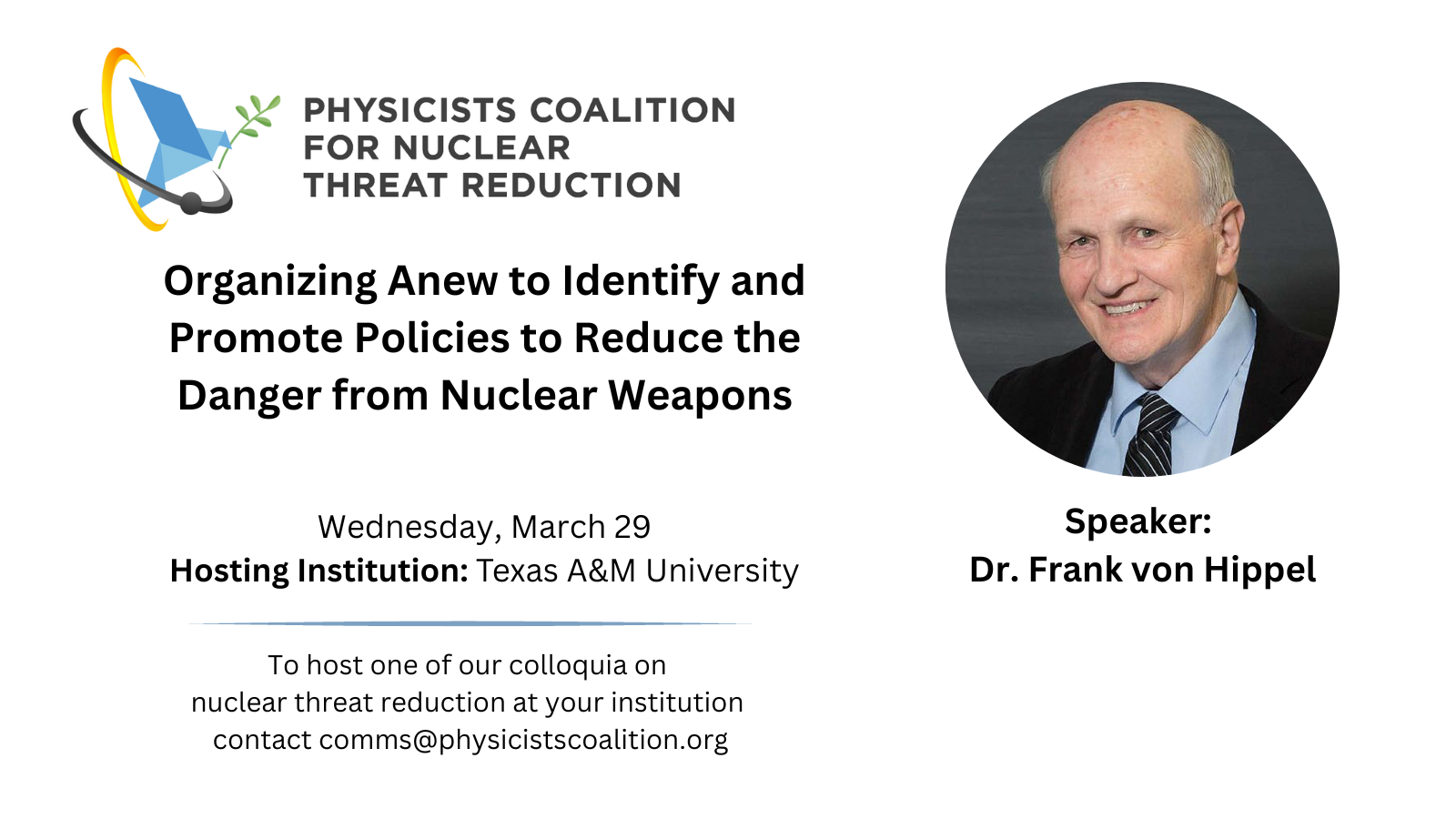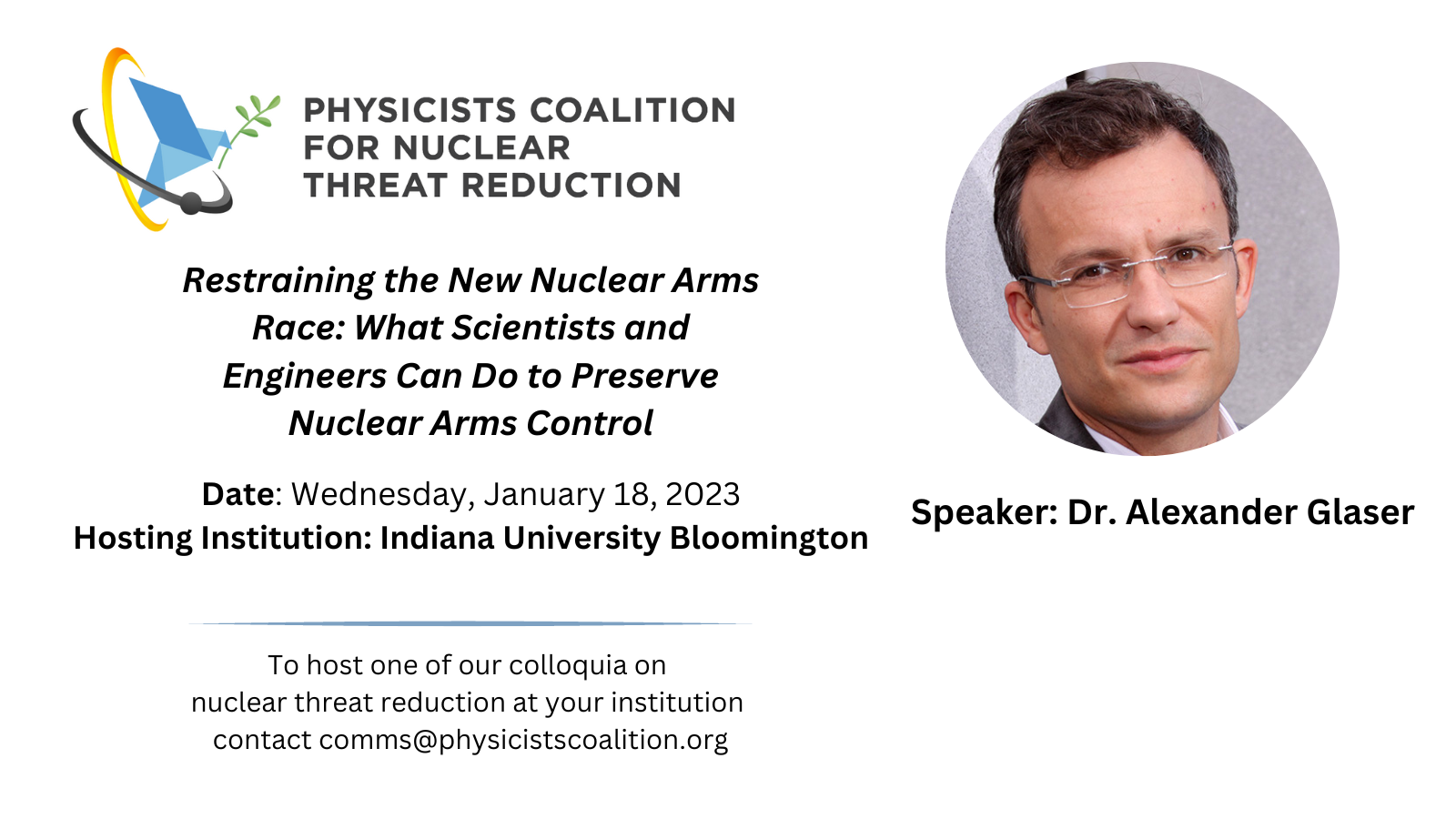
Indiana University Bloomington – Restraining the New Nuclear Arms Race: What Scientists and Engineers Can Do to Preserve Nuclear Arms Control
Colloquium Abstract We live in an increasingly dangerous nuclear world marked by the abandonment of hard-won arms-control and nonproliferation agreements; the modernization at a cost of trillions of dollars of existing nuclear arsenals; the development of new types of strategic weapons; and threats to use nuclear weapons that risk escalation to large-scale nuclear war. This […]

